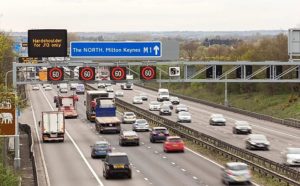Road safety
Quality assurance of all lane running motorway data published
The Office of Rail and Road (ORR) has released a report, following an independent review of the data concerning the safety of all lane running motorways.
The report specifically addresses the following questions:
- are the data and evidence used in the stocktake and the progress report reliable and robust and in line with established/best practice?
- have comparisons been made in an appropriate way about the relative safety of ALR motorways, with reference to conventional motorways and other roads?
- are there any other data that could be used to enhance our understanding of the relative safety of ALR motorways or to support the monitoring and evaluation of the effectiveness of the measures being put in place to improve safety and perceptions of safety?
- are there data and evidence available which can compare the international experience of operating similar types of road?
 All lane running (ALR) motorways are a type of Smart Motorway and have been in operation on the SRN in England since 2014. Smart Motorways differ from conventional motorways in that they seek to regulate traffic to smooth its flow, accounting for the effects of congestion. There are three types of Smart Motorway in England:
All lane running (ALR) motorways are a type of Smart Motorway and have been in operation on the SRN in England since 2014. Smart Motorways differ from conventional motorways in that they seek to regulate traffic to smooth its flow, accounting for the effects of congestion. There are three types of Smart Motorway in England:
- Controlled Motorway (CM) – with three or more lanes, a hard shoulder and variable speed limits
- Dynamic Hard Shoulder Running (DHS) – with variable speed limits and the hard shoulder selectively opened as a running lane during periods when there is a lower speed limit in force, and emergency areas at regular intervals
- All Lane Running (ALR) – with variable speed limits and the hard shoulder converted to a permanent running lane, and emergency areas at intervals.
These types of Smart Motorways, conventional motorways and SRN A-roads, and the trends observed on them, have been used to assess the relative safety of ALR motorways. The international publications that have been examined as part of this review have also referenced another type of motorway, similar to DHS:
- Hard Shoulder Running (HSR) – with variable speed limits and the hard shoulder opened at specific times of the day, and emergency areas at regular intervals.
The report suggests that, overall, the data and evidence that were available for analysis have been used. No errors were found in underlying calculations and the comparisons about the relative safety of ALR motorways were made in an appropriate way. There were some issues in the tools used to underpin risk modelling that Highways England should address, says the report. Some further recommendations to deepen the use of comparisons and enhance the understanding of risk exposure.
The evidence presented to the Transport Select Committee’s inquiry into smart motorways demonstrates a wide set of views from both experts and members of the public.
The limitations of available data will not be solved in the short term and therefore presents an immediate challenge in addressing the concerns expressed by stakeholders regarding the safety of ALR motorways.
The data for all sources of evidence should continue to be evaluated regularly as more data or better analytical techniques become available.
A number of further recommendations are set out in the report, which is available in full here.
Quality assurance of all lane running motorway data published
The Office of Rail and Road (ORR) has released a report, following an independent review of the data concerning the safety of all lane running motorways.
Barbour EHS
SHP - Health and Safety News, Legislation, PPE, CPD and Resources Related Topics
Top three areas to improve driver safety revealed in study
Driving Success
Safe driver, safe vehicle, safe load: Getting it right every time

 All lane running (ALR) motorways are a type of Smart Motorway and have been in operation on the SRN in England since 2014. Smart Motorways differ from conventional motorways in that they seek to regulate traffic to smooth its flow, accounting for the effects of congestion. There are three types of Smart Motorway in England:
All lane running (ALR) motorways are a type of Smart Motorway and have been in operation on the SRN in England since 2014. Smart Motorways differ from conventional motorways in that they seek to regulate traffic to smooth its flow, accounting for the effects of congestion. There are three types of Smart Motorway in England: